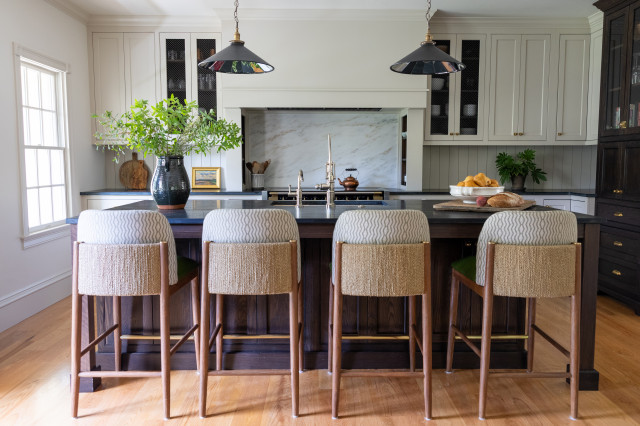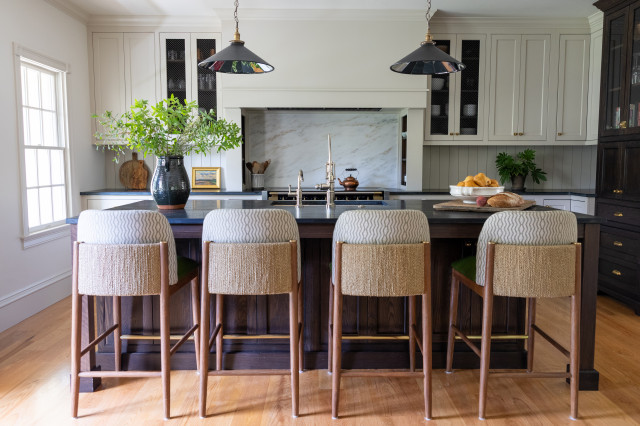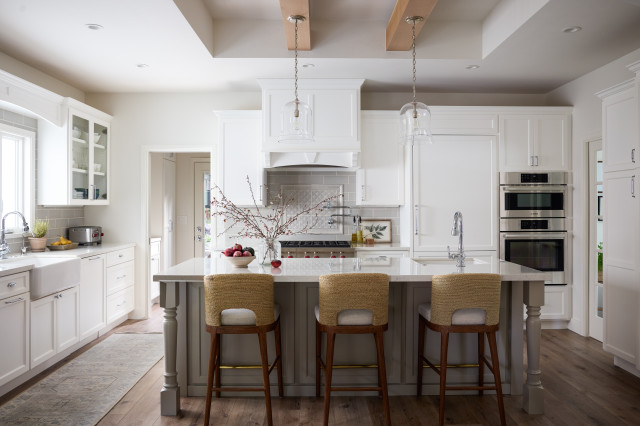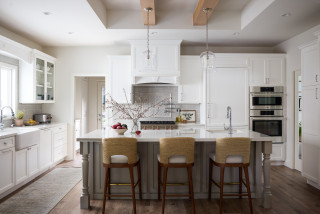
For help, they hired designer Jackie Friberg of Granite State Cabinetry and interior planner Shayne Mitchell of Orchard Hill Interiors. Now, perimeter cabinetry in a pale gray-blue adds sophisticated and soothing style. A new one-level streamlined island in natural black walnut visually warms the space and provides enough seating for the whole family. Concrete-look perimeter countertops and a quartzite island countertop add interest. Painted nickel-gap paneling and a classic open plate rack cabinet bring charming touches. Updated appliances and a revamped bar area enhance function.
This article was originally published by a www.houzz.com . Read the Original article here. .



















Counters help define your outdoor kitchen’s style. “Choose a stone [or other material] that ties the whole look together or provides a fun accent,” says Kara Gorski of Landed in Alexandria, Virginia.
Practical considerations. Add plenty of countertop area around the grill. “No matter how small an outdoor kitchen is, it needs to have adequate counter space,” says landscape designer Deborah Gliksman of Urban Oasis Landscape Design in Los Angeles. Douglass recommends leaving enough room for utensils as well as your cooked and uncooked food.
New York-based landscape designer Todd Haiman says you’ll probably need to seal the countertop when it’s installed and then reseal it every few years. “Fats from cooking as well as staining from metals left on top of it can stain it, and the elements can take their toll,” he says.
Finally, make good use of the cabinetry the counters sit on. It’s a prime space for storage as well as other amenities, such as an undercounter refrigerator.
Find a landscape contractor near you on Houzz